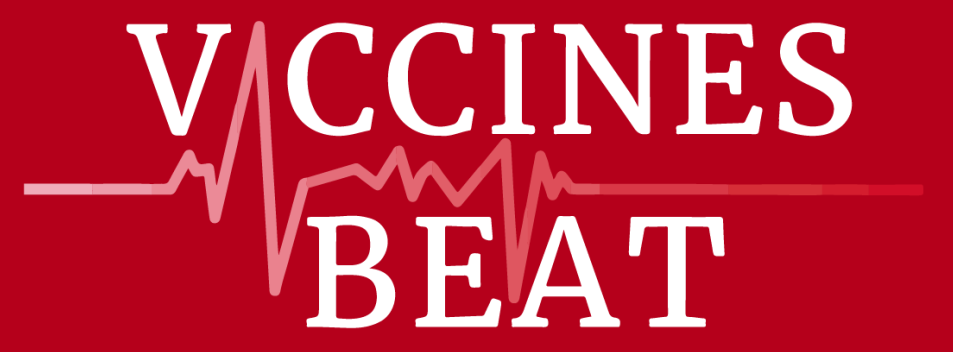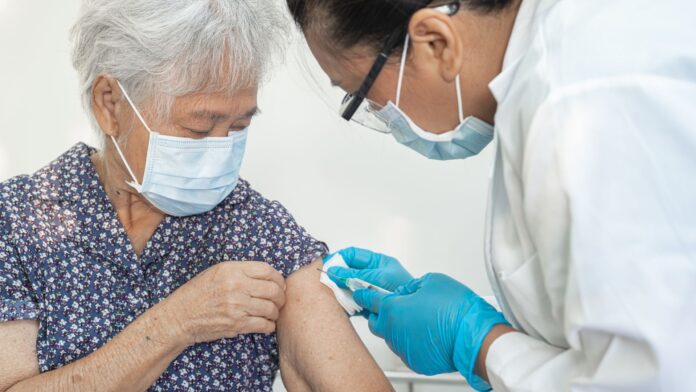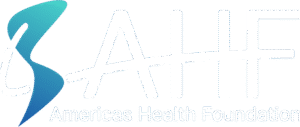Introduction:
Herpes zoster (HZ), commonly known as shingles, is a painful neurocutaneous condition caused by the reactivation of the varicella-zoster virus (VZV) within the dorsal root ganglia. It typically presents as a unilateral, blistering rash accompanied by radicular pain lasting 2–4 weeks. The pain can be severe and debilitating, often leading to depression, social isolation, and a significant reduction in quality of life. Beyond its impact on individual patients, HZ also imposes a substantial burden on caregivers, healthcare systems, and employers.
A significant portion of the healthcare burden associated with herpes zoster (HZ) stems from its complications, with post-herpetic neuralgia (PHN) being the most common. PHN is a chronic neuropathic pain that persists after the resolution of the acute vesicular rash and affects approximately one in five individuals with HZ. When the varicella-zoster virus (VZV) reactivates in certain cranial nerves, it can lead to ophthalmic herpes zoster, a potentially severe condition that may result in conjunctivitis, keratitis, iritis, uveitis, and even vision loss. Other serious complications include disseminated HZ (defined as a rash involving three or more dermatomes), as well as neurological, visceral, or vascular events, such as stroke and even myocardial infarction.
Between 20% and 30% of the population are expected to develop HZ in their lifetime. An estimated 14.9 million cases of HZ occurred globally in 2020 in individuals aged over 50 years, and this is predicted to increase to up to 19.1 million cases by 2030. The risk and severity of HZ increases with age, particularly after the age of 50 years, due to age-related decline in immunity (immunosenescence). Patients with immunosuppression and other severe comorbidities are also at higher risk of developing HZ than immunocompetent individuals of any age, and they are more likely to suffer from severe disease or HZ-associated complications.
The recombinant zoster vaccine (RZV):
The recombinant zoster vaccine (RZV or Shingrix) is now the only HZ vaccine available in many countries and has been the only vaccine recommended for moderately and severely immunocompromised patients.
The recombinant zoster vaccine (RZV) is composed of a single viral surface protein—glycoprotein E (gE)—combined with the AS01<sub>B</sub> adjuvant system. Glycoprotein E is essential for varicella-zoster virus (VZV) replication and is highly expressed in infected cells. It serves as the primary target for both humoral and cellular immune responses during VZV infection and can be efficiently produced using recombinant technology.
The AS01<sub>B</sub> adjuvant system includes monophosphoryl lipid A (MPL), a toll-like receptor 4 (TLR4) agonist, and QS-21, a saponin, both encapsulated within a liposomal formulation. Following intramuscular administration, RZV rapidly drains to the axillary lymph nodes, where it activates a broad cascade of immune cells and cytokines, ultimately promoting robust anti-gE antibody production and T-cell responses. The adjuvant plays a critical role in driving the vaccine’s high immunogenicity and clinical efficacy.
Two large randomized, placebo-controlled phase 3 trials, the Zoster Efficacy Study in Adults 50 Years of Age or Older (ZOE-50) and Zoster Efficacy Study in Adults 70 Years of Age or Older (ZOE-70), were conducted in 29,300 immunocompetent adults to determine efficacy of RZV in preventing HZ and PHN.
Follow-up of the ZOE-50 and ZOE-70 studies demonstrated that the recombinant zoster vaccine (RZV) maintains long-term efficacy against herpes zoster (HZ) exceeding 82%. In pooled analyses from these trials, RZV showed 91% efficacy against post-herpetic neuralgia (PHN) in adults aged ≥50 years, and 89% efficacy in those aged ≥70 years.
RZV is associated with both local and systemic reactogenicity, particularly within the first seven days following vaccination. Injection site reactions were significantly more common among RZV recipients compared to placebo (82% vs. 12%), with pain at the injection site reported by 79% of vaccine recipients. Systemic reactions, such as myalgia and fatigue, were also more frequent in the vaccine group (66% vs. 30%). Notably, the intensity of reactogenicity decreased with advancing age.
Despite higher reactogenicity, the incidence of serious adverse events (10.1% for RZV vs. 10.4% for placebo) and mortality rates (4.3% vs. 4.6%) were comparable between groups, suggesting these outcomes are attributable to the underlying aging population rather than to the vaccine itself.
RZV has a favorable safety profile and maintains comparable immunogenicity when co-administered with other vaccines, including unadjuvanted inactivated seasonal influenza, pneumococcal polysaccharide (PPV23), COVID-19 mRNA, and diphtheria-tetanus-pertussis (DTaP) vaccines.
The immunogenicity, safety, reactogenicity, and/or efficacy of the recombinant zoster vaccine (RZV) in moderately to severely immunocompromised patients has been evaluated in five phase 2 and 3 clinical trials.
In these studies, two doses of RZV were administered one to two months apart, with follow-up 12 months later in patient cohorts including those undergoing autologous hematopoietic stem cell transplantation (HSCT), solid organ transplantation (SOT), those with hematologic malignancies, or solid tumors receiving chemotherapy.
Among patients with hematological malignancies—including chronic lymphocytic leukemia, Hodgkin’s disease, non-Hodgkin’s lymphoma, and multiple myeloma—RZV was administered during or after chemotherapy in individuals aged ≥18 years (73% were over age 50). Following vaccination, T-cell responses increased in 84%, and gE antibody responses in 60% of participants. A post hoc analysis estimated vaccine efficacy (VE) against herpes zoster (HZ) at 87%.
The largest phase 3 trial included 1,846 patients who received RZV 50 to 70 days after autologous HSCT for conditions such as acute myeloid leukemia, Hodgkin’s and non-Hodgkin’s lymphoma, or multiple myeloma. Immune responses were strong: 89% showed a significant T-cell response, and 71% had increased gE antibody levels. VE was 68% against HZ, 89% against post-herpetic neuralgia (PHN), 78% against other complications, and 85% against HZ-related hospitalization. Notably, patients treated with rituximab for B-cell lymphomas or chronic lymphocytic leukemia had comparable vaccine efficacy.
In a recent meta-analysis including 33 eligible publications, the efficacy of the RZV against herpes zoster (HZ) in immunocompetent populations ranged from 90% to 97%, while real-world effectiveness ranged from 71% to 86%. Notably, protection remained above 70% for at least 10 years, with no significant differences observed across age groups or ethnicities.
As an additional benefit, the RZV has been associated with a lesser risk of dementia.
Furthermore, numerous studies have demonstrated the cost-effectiveness (CE) of RZV across all age groups evaluated. In immunocompromised populations, RZV has also been shown to be cost-saving in several analyses.
RZV recommendations:
- In its latest position paper, the Strategic Advisory Group of Experts (SAGE) on Immunization at the World Health Organization (WHO) states the following: “Due to the unknown burden of HZ in most countries and insufficient data concerning the use of this relatively new vaccine, WHO does not offer any recommendation concerning the routine use of HZ vaccine at this time. Currently, data on the duration of protection provided by HZ vaccination are insufficient and there is initial evidence of waning of protection over time, as well as uncertainty regarding the optimal age for vaccination and the potential role of a booster dose. However, countries, especially those with an aging population and demographic shift towards older ages, may decide to introduce routine HZ vaccination if they have an important burden of disease and consider the programme beneficial. For those countries deciding to proceed with a HZ vaccination programme, the optimal age and dosing schedule of HZ vaccination should take into consideration the age-dependent burden of disease, vaccine effectiveness, duration of protection, and cost-effectiveness”.
- The USA-Centers for Disease Control and Prevention (CDC) CDC recommends 2 doses of recombinant zoster vaccine (RZV) to prevent shingles and related complications in adults aged ≥50 years and 2 doses of RZV for adults aged ≥19 years who are or will be immunodeficient or immunosuppressed.
- The European Medicines Agency (EMA) recommends the recombinant zoster vaccine (RZV) for adults aged 50 years and older to protect against herpes zoster (HZ) and post-herpetic neuralgia (PHN). It also advises vaccination for adults aged 18 years and older who are at increased risk of HZ.
- Dosing: The vaccination course consists of 2 injections given 2 months apart. If necessary, the second dose can be given later but within 6 months after the first dose. People whose immune system does not work properly and who would benefit from a shorter vaccination schedule can have the second dose one to two months after the first dose.
Bibliography:
- Williams LR, Hombach J, Marti M. Evaluating the Immunogenicity, Efficacy, and Effectiveness of Recombinant Zoster Vaccine for Global Public Health Policy. Vaccines (Basel). 2025 Feb 27;13(3):250. doi: 10.3390/vaccines13030250.
- Cunningham AL, Sandgren KJ, Taylor J. Current status of immunisation for herpes zoster. Hum Vaccin Immunother. 2025 Dec;21(1):2445384. doi: 10.1080/21645515.2024.2445384.
- Cunningham AL, Lal H, Kovac M, Chlibek R, Hwang SJ, Díez-Domingo J, Godeaux O, Levin MJ, McElhaney JE, Puig-Barberà J, Vanden Abeele C, Vesikari T, Watanabe D, Zahaf T, Ahonen A, Athan E, Barba-Gomez JF, Campora L, de Looze F, Downey HJ, Ghesquiere W, Gorfinkel I, Korhonen T, Leung E, McNeil SA, Oostvogels L, Rombo L, Smetana J, Weckx L, Yeo W, Heineman TC; ZOE-70 Study Group. Efficacy of the Herpes Zoster Subunit Vaccine in Adults 70 Years of Age or Older. N Engl J Med. 2016 Sep 15;375(11):1019-32. doi: 10.1056/NEJMoa1603800.
- Lal H, Cunningham AL, Godeaux O, Chlibek R, Diez-Domingo J, Hwang SJ, Levin MJ, McElhaney JE, Poder A, Puig-Barberà J, Vesikari T, Watanabe D, Weckx L, Zahaf T, Heineman TC; ZOE-50 Study Group. Efficacy of an adjuvanted herpes zoster subunit vaccine in older adults. N Engl J Med. 2015 May 28;372(22):2087-96. doi: 10.1056/NEJMoa1501184.
- Lal H, Cunningham AL, Godeaux O, Chlibek R, Diez-Domingo J, Hwang SJ, Levin MJ, McElhaney JE, Poder A, Puig-Barberà J, Vesikari T, Watanabe D, Weckx L, Zahaf T, Heineman TC; ZOE-50 Study Group. Efficacy of an adjuvanted herpes zoster subunit vaccine in older adults. N Engl J Med. 2015 May 28;372(22):2087-96. doi: 10.1056/NEJMoa1501184.
- Boutry C, Hastie A, Diez-Domingo J, Tinoco JC, Yu CJ, Andrews C, Beytout J, Caso C, Cheng HS, Cheong HJ, Choo EJ, Curiac D, Di Paolo E, Dionne M, Eckermann T, Esen M, Ferguson M, Ghesquiere W, Hwang SJ, Avelino-Silva TJ, Kosina P, Liu CS, Markkula J, Moeckesch B, Murta de Oliveira C, Park DW, Pauksens K, Pirrotta P, Plassmann G, Pretswell C, Rombo L, Salaun B, Sanmartin Berglund J, Schenkenberger I, Schwarz T, Shi M, Ukkonen B, Zahaf T, Zerbini C, Schuind A, Cunningham AL; Zoster-049 Study Group. The Adjuvanted Recombinant Zoster Vaccine Confers Long-Term Protection Against Herpes Zoster: Interim Results of an Extension Study of the Pivotal Phase 3 Clinical Trials ZOE-50 and ZOE-70. Clin Infect Dis. 2022 Apr 28;74(8):1459-1467. doi: 10.1093/cid/ciab629.
- Strezova A, Diez-Domingo J, Al Shawafi K, Tinoco JC, Shi M, Pirrotta P, Mwakingwe-Omari A; Zoster-049 Study Group. Long-term Protection Against Herpes Zoster by the Adjuvanted Recombinant Zoster Vaccine: Interim Efficacy, Immunogenicity, and Safety Results up to 10 Years After Initial Vaccination. Open Forum Infect Dis. 2022 Oct 23;9(10):ofac485. doi: 10.1093/ofid/ofac485.
- Sun Y, Kim E, Kong CL, Arnold BF, Porco TC, Acharya NR. Effectiveness of the Recombinant Zoster Vaccine in Adults Aged 50 and Older in the United States: A Claims-Based Cohort Study. Clin Infect Dis. 2021 Sep 15;73(6):949-956. doi: 10.1093/cid/ciab121.
- Kovac M, Lal H, Cunningham AL, Levin MJ, Johnson RW, Campora L, Volpi A, Heineman TC; ZOE-50/70 Study Group. Complications of herpes zoster in immunocompetent older adults: Incidence in vaccine and placebo groups in two large phase 3 trials. Vaccine. 2018 Mar 14;36(12):1537-1541. doi: 10.1016/j.vaccine.2018.02.029.
- López-Fauqued M, Campora L, Delannois F, El Idrissi M, Oostvogels L, De Looze FJ, Diez-Domingo J, Heineman TC, Lal H, McElhaney JE, McNeil SA, Yeo W, Tavares-Da-Silva F; ZOE-50/70 Study Group. Safety profile of the adjuvanted recombinant zoster vaccine: Pooled analysis of two large randomised phase 3 trials. Vaccine. 2019 Apr 24;37(18):2482-2493. doi: 10.1016/j.vaccine.2019.03.043.
- López-Fauqued M, Co-van der Mee M, Bastidas A, Beukelaers P, Dagnew AF, Fernandez Garcia JJ, Schuind A, Tavares-da-Silva F. Safety Profile of the Adjuvanted Recombinant Zoster Vaccine in Immunocompromised Populations: An Overview of Six Trials. Drug Saf. 2021 Jul;44(7):811-823. doi: 10.1007/s40264-021-01076-w.
- Taquet M, Dercon Q, Todd JA, Harrison PJ. The recombinant shingles vaccine is associated with lower risk of dementia. Nat Med. 2024 Oct;30(10):2777-2781. doi: 10.1038/s41591-024-03201-5.
- Varicella and herpes zoster vaccines: WHO position paper, June 2014. July 7, 2025. Weekly Epidemiological Record, 2014, vol. 89, 25 [full issue] https://www.who.int/publications/i/item/who-wer-8925-265-288.
- CDC: Shingles Vaccine Recommendations. Accessed July 1, 2025. https://www.cdc.gov/shingles/hcp/vaccine-considerations/index.html.
- EMA: Shingrix. Accessed July 1, 2025. https://www.ema.europa.eu/en/medicines/human/EPAR/shingrix#overview.







